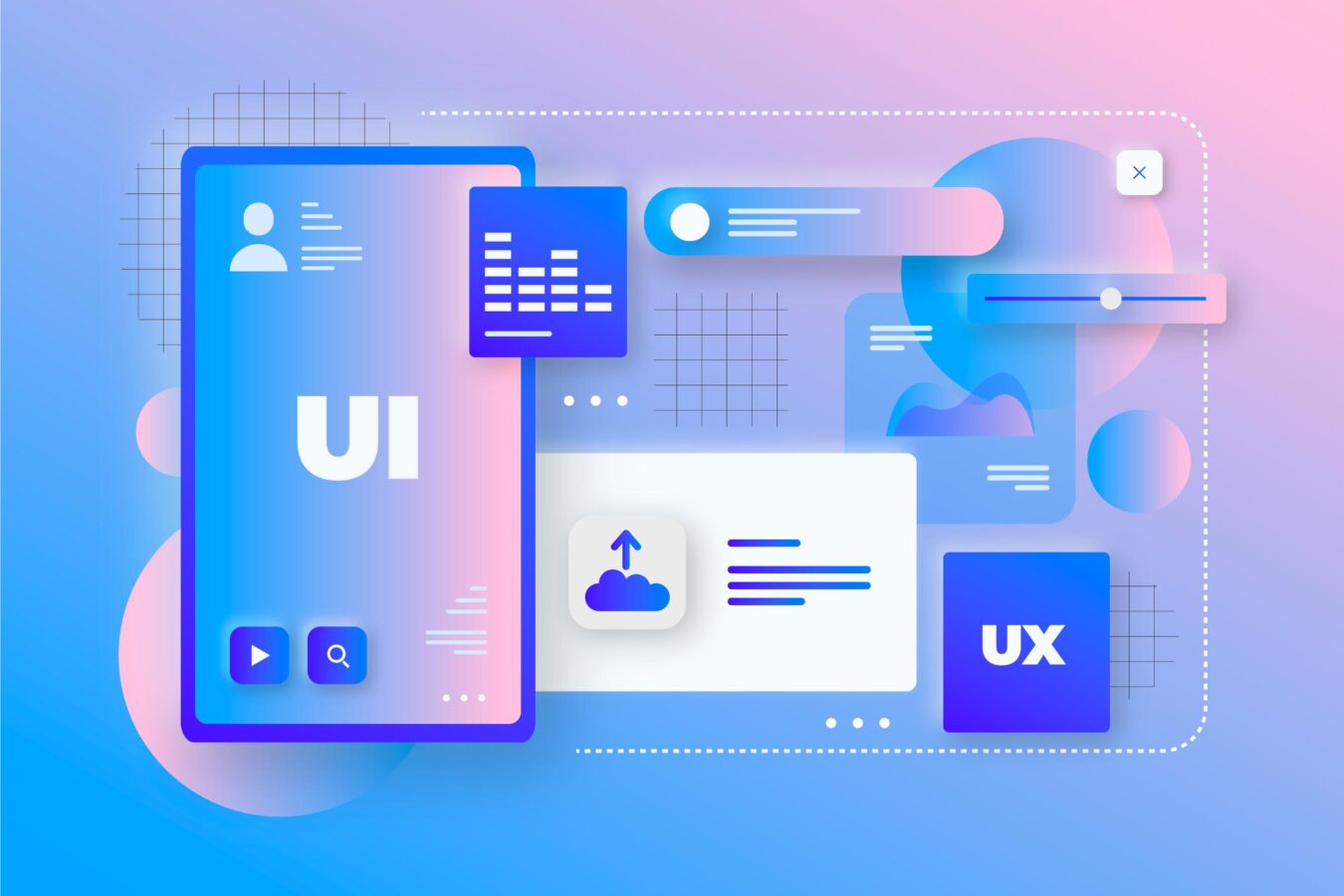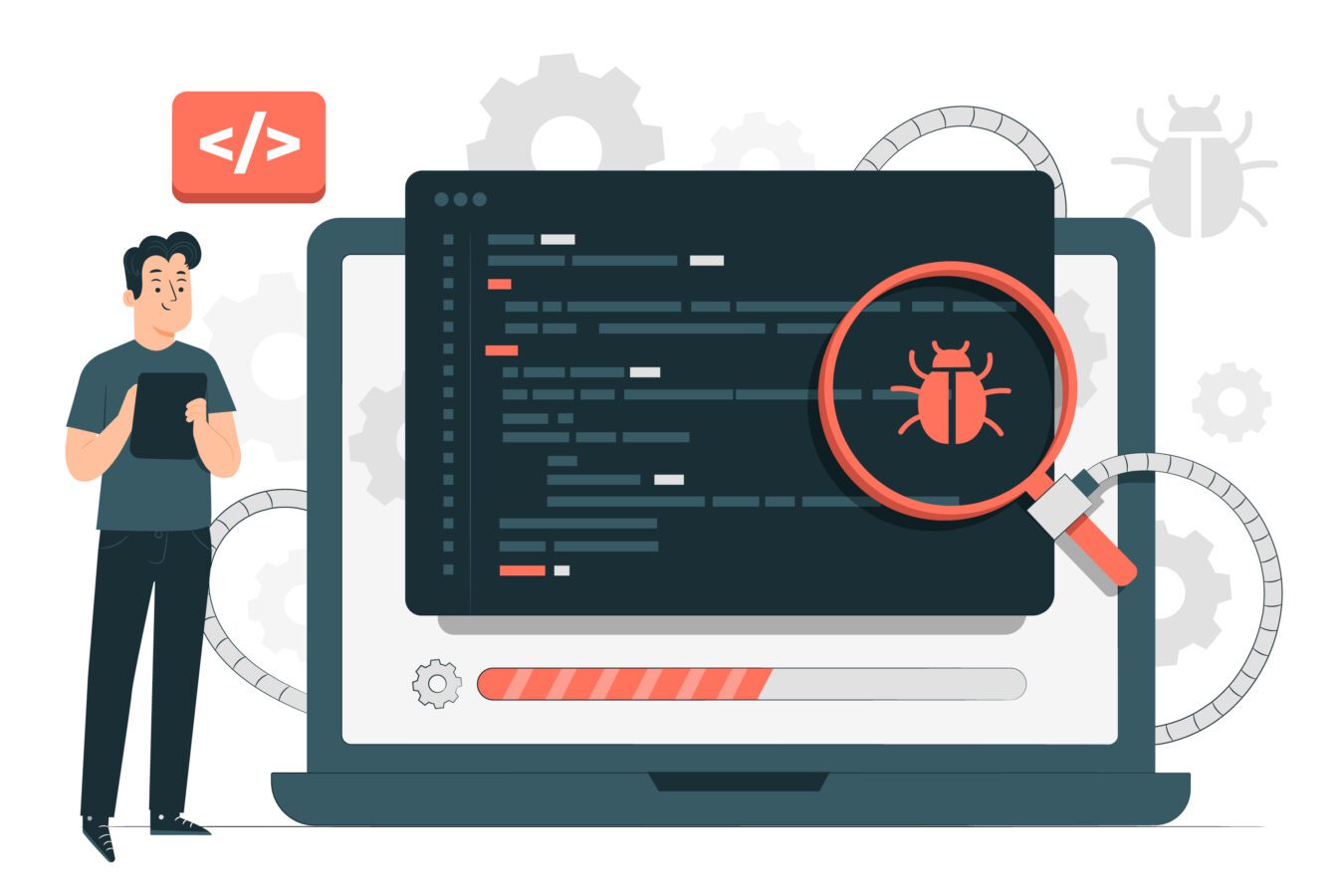Despite earning a reputation as a diverse programming language, PHP is primarily one of the most important server-side scripting languages. For years, it has been the backbone of dynamic websites and applications that deliver optimal online experiences.
This comprehensive guide is designed to do more than just introduce you to PHP – it’s a deep dive into the art and science of PHP web development. So, what is PHP, and why is it so essential for modern web development? Let’s start with the basics, and then we’ll explore what makes PHP such a powerful tool in any web developer’s toolkit.
PHP as a web development language
With its roots dating back to 1994, PHP an acronym for “Hypertext Preprocessor,” has grown from a simple set of scripts to a robust, mature language. Its initial purpose – enabling web developers to create dynamic web content – remains at its core.
It is pertinent to mention here that server-side scripting with PHP allows for simplistic interaction between websites, databases, and servers. Consequently, this makes it the perfect choice for building complex, data-driven web applications.
This general-purpose scripting language offers flexibility, extensive libraries, and large community support, making it a cornerstone of modern web development. This means that understanding PHP is key to mastering backend development and crafting powerful, user-friendly web experiences.
Why is PHP used for web development?
PHP’s widespread adoption in web development is a consequence of its unique combination of power, flexibility, and ease of use. Its server-side scripting model allows for dynamic web page creation, enabling real-time interaction between users, databases, and servers. PHP’s extensive libraries and frameworks go a long way toward simplifying complex tasks like authentication, database connections, and templating.
Similarly, cross-platform compatibility ensures PHP applications can run on various operating systems. Overall, its blend of simplicity and sophistication makes it an ideal choice for quickly and efficiently building stringent, data-driven web applications.
1. Ease of use
Underling its gentle learning curve, PHP has a remarkably low barrier to entry. Its syntax is intuitive, and web developers can start building dynamic pages right away. PHP’s error reporting provides helpful feedback when issues arise.
2. Rapid development
PHP’s extensive libraries and frameworks (like Laravel, CodeIgniter, and CakePHP) offer pre-built functions for common tasks. This speeds up development and lets developers focus on application logic.
3. Robust ecosystem
In case you run into errors in the development phase, PHP’s large community is here to help you. The massive PHP community ensures a wealth of free resources, tutorials, and pre-built code are available. Popular PHP frameworks and libraries are well-maintained via MVC architecture and actively improved.
4. Cross-platform compatibility
Importantly, this scripting language can run on multiple operating systems (Windows, Linux, macOS) and supports many web servers (Apache, Nginx, IIS). Such a level of flexibility makes PHP a great choice for diverse development environments.
5. Scalability
Over time, your website is expected to generate more traffic and become more complicated. This is where the scalability factor comes in. Established websites like Facebook and WordPress leverage the power of PHP to run high-traffic, data-intensive applications.
Additionally, PHP’s support for caching, load balancing, etc., ensures it can scale effectively with growing needs. This is what makes PHP such a useful server-side scripting language.
Tools required for PHP development
To get started with PHP development, you’ll need a few essential tools. While the basics are simple, having the right tools can greatly improve your coding efficiency and overall development experience.
1. Text editor or IDE
At the heart of any PHP development setup is a text editor or Integrated Development Environment (IDE). While a basic text editor like Notepad (Windows) or TextEdit (macOS) can be used, an IDE provides many features that streamline the coding process.
Beneficial IDEs offer syntax highlighting, code completion, debugging tools, and project management, along with other features. For PHP development, some top IDEs are:
Best IDEs for PHP web development
- PhpStorm: Known for its advanced code completion, inspections, and refactoring capabilities. PhpStorm provides in-depth code analysis and supports PHP frameworks like Laravel and Symfony.
- NetBeans: It is a free, open-source IDE offering code completion, debugging, and project management. NetBeans supports PHP as well as HTML, CSS, and JavaScript.
- Eclipse with PHP Plugin: The popular Eclipse IDE can be extended with a PHP plugin for PHP development. It offers code completion, debugging, and project management.
- Sublime Text: Sublime Text is a lightweight, feature-rich text editor. While not a full IDE, Sublime Text’s plugins (like SublimeLinter for PHP) provide IDE-like functionality.
- Visual Studio Code (VS Code): A popular, free-to-use, lightweight code editor, VS Code’s PHP extensions (like PHP Intellisense and Debugger for Chrome) offer code completion, debugging, and more features for PHP developers.
2. Web server
To run and test PHP applications, a web server is required. Here are some of the more popular choices:
- Apache: A widely-used, open-source web server. Apache supports PHP and offers modules for URL rewriting, caching, and more.
- Nginx: A lightweight, high-performance web server. Nginx is known for its ability to handle high traffic and supports PHP-FPM for improved PHP performance.
- IIS (Internet Information Services): For Windows, IIS is a web server and web development tool. It supports PHP and offers features like URL rewriting and caching.
3. Database management
Many PHP applications interact with databases to store and retrieve data. Let’s have a look at the well-known databases:
- MySQL: A widely-used, open-source relational database management system. MySQL is often paired with PHP for web development.
- PostgreSQL: A powerful, open-source relational database offering advanced features like transactions and full-text search.
- MongoDB: A NoSQL database offering flexible schema design and high scalability.
4. Version control
For managing code changes and collaborating with others, version control systems are essential.
- Git: A free, open-source version control system. Git allows for local version control and offers web-based platforms like GitHub and GitLab for collaboration.
5. Debugging tools
Debugging is a crucial part of every development process. PHP offers built-in debugging tools, and many IDEs provide enhanced debugging features. Xdebug is a popular PHP extension for debugging and profiling.
6. Local development environments
For a hassle-free setup, consider a pre-configured local development environment like XAMPP (Windows, macOS, Linux) or MAMP (macOS). These packages include Apache, MySQL, PHP, and more.
How can you develop web applications in PHP?
In the PHP web development process, there are various steps that ensure that the final product is efficiently delivered. Here, we will discuss each step in detail:
1. Ideation
The journey begins with ideation – identifying a problem or opportunity and conceptualizing a web application to address it. This involves market research, understanding your target audience, and envisioning the application’s features and functionality. A well-defined idea serves as the foundation for the entire development process.
2. Kickstarting the project
Once you have a solid idea, it’s time to kickstart the project. This includes setting clear goals, defining the project scope, and establishing a rough timeline and budget. It’s also essential to decide on the PHP version, frameworks, libraries, and tools you’ll use. Having a well-planned project setup ensures a smooth development journey.
3. Discovery phase
The discovery phase involves in-depth research and planning. You’ll gather requirements, create user personas, and outline the application’s workflow and architecture. This step is crucial for understanding the project’s complexities and developing a tailored solution. It may involve creating a proof of concept to validate key assumptions.
4. Wireframing
Next, you’ll create wireframes – low-fidelity sketches of the application’s UI. Wireframing helps visualize the layout, navigation, and core elements of each page. It’s an inexpensive way to experiment with different designs and iterate based on feedback. Once the wireframes are finalized, you can move on to visual design and prototyping.
5. Development
With a solid plan and design in place, PHP development can begin. This involves setting up the development environment, writing clean, modular PHP code, integrating databases, and implementing security measures.
Keep in mind that it’s essential to follow best practices, use version control (like Git), and write automated tests to ensure code quality. The development process is iterative, with ongoing refinement and debugging.
6. Post-launch support
The developer’s job is not done yet because even after launching the application, the work doesn’t stop. Post-launch support is vital for ensuring the application’s success. This includes monitoring performance, fixing any issues that arise, gathering user feedback, and planning for future enhancements.
Remember that continuous iteration and improvement are key to meeting evolving user needs and staying competitive.
Best PHP frameworks
When it comes to building web applications, PHP frameworks play a vital role in optimizing development, promoting best practices, and ensuring maintainability. PHP frameworks provide a structured approach to coding, alleviating the need to start from scratch with each project.
They offer pre-built components for common tasks, robust security features, and tools for improved productivity. In short, by leveraging a PHP framework, developers can focus on writing application logic rather than reinventing the wheel.
1. Laravel
Laravel, popularly known as “The PHP framework for web artisans,” is a popular choice for building robust web applications. Its eloquent ORM simplifies database interactions, while its middleware system enables centralized request handling.
Laravel’s queueing mechanism supports asynchronous task execution, and its routing system facilitates RESTful API creation. However, Laravel’s extensive features may introduce a learning curve and performance overhead.
Pros of Laravel:
- Eloquent ORM for simplified database interactions
- Middleware system for centralized request handling
- Support for asynchronous task execution via queues
- Powerful routing system for RESTful API creation
Cons of Laravel:
- Extensive features may introduce a learning curve
- May introduce performance overhead compared to lighter frameworks
2. Yii
Yii is a high-performance framework suitable for the rapid development of modern web applications. Its Gii tool enables automated code generation, speeding up development. Yii provides comprehensive caching support for high-performance and robust security features to protect against common threats.
While highly customizable, Yii may be overkill for small projects and requires additional front-end technologies.
Pros of Yii:
- High-performance capabilities
- Automated code generation
- Comprehensive caching support
- Robust security features
Cons of Yii:
- Requires additional front-end technologies
3. Phalcon
Phalcon, a full-stack framework written in C, offers exceptional performance due to its low-level memory footprint and optimized execution. Its modular architecture allows selective use of components. However, as a C-extension, Phalcon requires server-level installation and may have compatibility issues. Its compiled nature can also hinder framework-level changes.
Pros of Phalcon:
- Exceptional performance due to C implementation
- Modular architecture for selective component use
Cons of Phalcon:
- Requires server-level installation
- May have compatibility issues across environments
- Compiled nature can hinder framework-level changes
4. CakePHP
CakePHP is an MVC framework designed for lightning-fast development with minimal configuration. It provides built-in tools for validation, caching, and database access, along with code generation capabilities.
While CakePHP is easy to learn, it may introduce overhead compared to lightweight frameworks.
Pros of CakePHP:
- Designed for rapid development with minimal configuration
- Built-in tools for validation, caching, and database access
- Code generation capabilities
Cons of CakePHP:
- It may introduce overhead compared to lightweight frameworks
- Emphasis on convention can feel restrictive
5. CodeIgniter
CodeIgniter is a lightweight MVC framework known for its small footprint and flexibility. It offers built-in security features and simplified testing tools. CodeIgniter has broad PHP version compatibility but lacks a built-in ORM and may face scalability challenges for complex applications.
Pros of Codeigniter:
- Lightweight footprint
- Flexibility in implementation
- Built-in security features
- Simplified testing tools
Cons of Codeigniter:
- Lacks a built-in ORM
- May face scalability challenges
6. Symfony
A component-based framework, Symfony is considered ideal for building complex business applications. Its modular architecture and robust security component make it highly customizable. Symfony has optimization tools for high performance but can be heavier than some alternatives and requires explicit configuration.
Pros of Symfony:
- Modular architecture for high customizability
- Robust security component
- Optimization tools for high performance
Cons of Symfony:
- Can be heavier than some alternatives
- Requires explicit configuration
7. Laminas Project (formerly Zend)
The Laminas Project is a modular framework emphasizing object-oriented design. Its Mezzio middleware runtime enables flexible application development. Laminas has built-in security features but may require adjustments for Zend Framework migrations and has a smaller community compared to other popular frameworks.
Pros of Laminas:
- Emphasis on object-oriented design
- Mezzio middleware runtime for flexible development
- Built-in security features
Cons of Laminas:
- May require additional adjustments
- Smaller community
8. FuelPHP
FuelPHP is a full-stack framework built around the HMVC architecture, promoting efficiency and reusability. Its security-focused system includes URI filtering and output encoding. FuelPHP supports modular code but has a smaller community compared to more established frameworks.
Pros of FuelPHP:
- HMVC architecture for efficiency and reusability
- Security-focused system with URI filtering and output encoding
- Supports modular code
Cons of FuelPHP
- Smaller community compared to more established frameworks
9. Slim Framework
It is a lightweight PHP microframework ideal for building small web applications and APIs. Slim is known for having a minimal codebase and is highly extensible. Although Slim is easy to learn, it lacks the robust features and tools provided by full-stack frameworks.
Pros of Slim:
- Minimal codebases
- Highly extensible
- Easy to learn
Cons of Slim:
- Lacks robust and advanced features
10. PHPixie
PHPixie is a lightweight framework that combines the best elements of other frameworks. It offers an HMVC architecture, a robust ORM, and a modular design. Due to its unique approach, PHPixie is highly customizable but may require additional learning.
Pros of PHPixie:
- Combines best elements of other frameworks
- HMVC architecture
- Robust ORM
- Modular design
Cons of PHPpixie:
- May require additional learning due to its unique approach
Mistakes to avoid in PHP development
When it comes to PHP development, being aware of common errors is crucial for building robust, secure, and efficient web applications. Even experienced developers can fall into traps that lead to errors, vulnerabilities, and performance issues. Knowing what mistakes to avoid lets you write cleaner code and ensure your web applications provide the best user experience.
1. Poor variable naming:
Imagine digging through code filled with variables like $x, $y, and $z. Using unclear or generic variable names makes code hard to read and understand for others and even for yourself. Always use descriptive names that indicate a variable’s purpose.
For example, instead of $u, use $currentUser to convey what the variable represents clearly. This makes your code more readable and maintainable for future enhancements and updates.
2. The IDOR vulnerability lurking in your code:
Failing to validate user input can lead to Insecure Direct Object Reference (IDOR) vulnerabilities. Always sanitize and validate user data to prevent unauthorized access. For instance, if a user ID is passed in a URL parameter, ensure it matches the authenticated user’s ID to prevent access to other users’ data.
3. The SQL injection attack:
One of the lethal cyber-attacks on a web application is the SQL injection attack. Not properly escaping database queries can allow attackers to inject malicious SQL code. Try to use prepared statements and parameterized queries to prevent SQL injection. These separate the SQL code from the user input, preventing attackers from modifying the query logic.
4. Weak password hashing:
Using weak hashing algorithms (like MD5) can make it easy for attackers to crack passwords with a dictionary and brute force attacks. Therefore, you must use strong hashing algorithms like bcrypt, PBKDF2, or Argon2. These algorithms are designed to be slow and computationally expensive, making brute-force attacks infeasible.
5. Exposing error messages:
If your error message contains too much information, you run the risk of leaking too much sensitive data. Displaying too detailed error messages can provide attackers with valuable information. Always log errors securely and display generic error messages to users. This ensures sensitive information about your application’s internals is not leaked.
6. Not validating user input:
Failing to validate user input can lead to errors, vulnerabilities, and unexpected behavior. Always validate and sanitize user input on the server-side. Remember that you should never trust user input and always check it meets your expected format and criteria.
7. Outdated PHP versions:
When was the last time you updated your PHP version? Older PHP versions are more likely to leave your application vulnerable to severe performance issues or possible attacks. Therefore, as a PHP developer, you should always use the latest supported version of PHP. This ensures you have the latest security patches and can take advantage of performance optimizations and new language features.
How to hire PHP developers for your project
When it comes to bringing your web project to life, hiring a skilled PHP developer is crucial. A talented PHP developer is more than just a coder – they’re your ally in building a user-friendly web application that meets your goals.
PHP developers work with the PHP language and PHP-based technologies to create dynamic web experiences. Their expertise is more than vital for crafting fast, secure, and scalable web applications.
Key skills to look for in PHP developers
- Proficiency in PHP, HTML, CSS, and JavaScript
- Experience with MySQL, Ajax, jQuery, and other web technologies
- Understanding of APIs, Linux, and the Model-View-Controller (MVC) architecture
- Familiarity with PHP frameworks like PHPUnit, Slim Framework, Laravel Framework, etc.
PHP developer responsibilities
- Testing web applications across various devices and web browsers
- Developing solutions to enhance performance and user experience
- Optimizing web application architecture for speed and scalability
- Collaborating with the development team to meet project goals
Hiring a dedicated team of PHP experts is essential for outsourcing your PHP web development project. Look for developers who not only have strong technical skills but also understand your project’s objectives. Their expertise will be instrumental in building a web application that exceeds your expectations and engages your target audience.
Remember, the success of your web project is directly linked to the talent of your PHP development team. Keep in mind that you must invest time in finding the right developers in order to create a web application that stands out in today’s competitive online landscape.
Choose Ropstam Solutions for web app development services
As a server-side scripting language, PHP has gained immense mainstream attention in the digital landscape. To help beginners make a mark in this field, this blog serves as a guide underlining every aspect of PHP web development.
At the heart of a successful web app project is a talented team of developers who carefully manage the application’s client-sides and server sides. At Ropstam Solutions, we boast years of record and an award-winning of PHP developers who play their part in every web app development project. Want to outsource your PHP-based project? Look no further than Ropstam Solutions. Give us a call today and witness the magic of this language first-hand.















